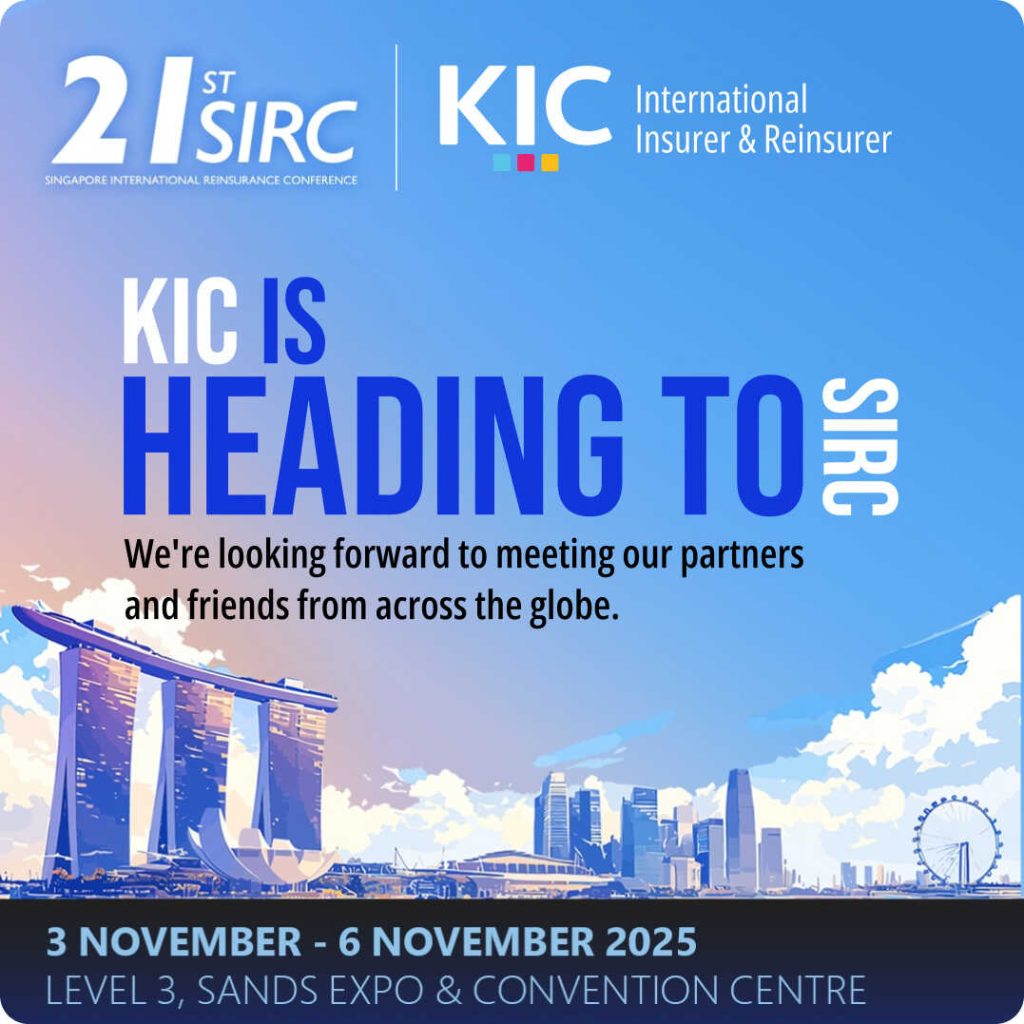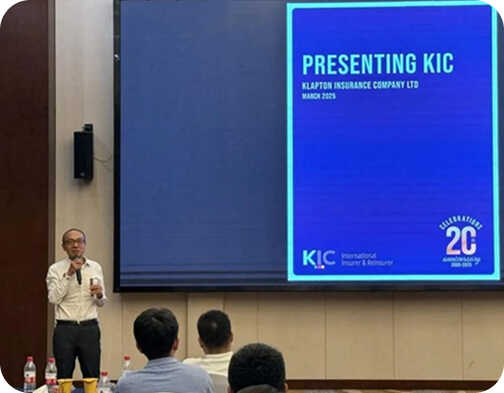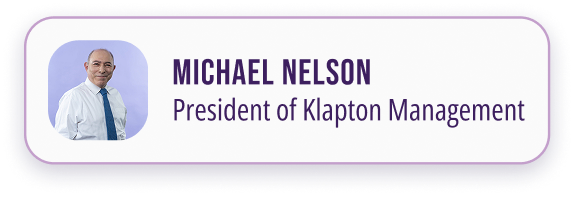CFO
Message

Dear Partners, Clients, and Colleagues,
We have recently finalised our Q3 management accounts and are pleased to announce a significant rise in our Gross Written Premium from €24.1m for the period to 30 September 2024 to €61.2m for the period to 30 September 2025 an increase of 154%.
This rise is spread across a number of our business lines and builds on our decision to enter the ILS collateralised insurance market in the United States in 2024, as a result of which we have seen premium growth from €18.9m in 2024 to €48.2m in 2025 on that line.
Our figures also reflect strong growth in the core products of sureties, facultative reinsurance and general insurance, from €2.8m in 2024 to €12.2m in 2025.
We have taken the difficult decision to address some of our historic issues regarding aged debt, although this has impacted on the underwriting profitability, we believe this was a necessary step to reflect the developments in the expected collectability of those premiums.
In addition to the debt write off mentioned above, we have also made several large claim settlements in 2025, notably in the treaty and surety businesses, which have also impacted on the profitability. However this reflects our strong commitment to efficient, fair and equitable claims management and settlement thereof.
Our Balance Sheet remains strong, with total assets exceeding €100m, the key points to note is the increase in both cash and financial investments, which are driven by improvements in liquidity in the year-to-date.
Outside of the financial reporting, we continue to strengthen our team throughout 2025, with recent hires in finance and compliance as we look to continually improve our service. We have also made further investment in our core systems as we look to develop them to meet changing business, regulatory and reporting requirements.
Reinsurance at KIC:
Strengthening Global Connections Through Expertise

Evolving Role in a Changing Market
The reinsurance industry continues to evolve, shaped by new forms of risk, market volatility, and shifting client expectations. Within this dynamic environment, the Reinsurance Department at KIC plays a central role in connecting markets, strengthening partnerships, and delivering reliable capacity across regions.
Growth and Expansion
Over the past year, our department has more than doubled in size, reflecting both KIC’s rapid expansion and the growing confidence of our partners. Supported by an increasingly diverse and skilled team, we continue to broaden our facultative portfolio through disciplined underwriting and close collaboration with brokers and cedants around the world.
 Responding to Climate Challenges
Responding to Climate Challenges
As climate-related events become more frequent and severe, reinsurers are called upon to adapt with greater precision and resilience. The need for reliable reinsurance support, particularly in catastrophe-prone and developing regions, is stronger than ever. At KIC, we monitor emerging climate trends closely, ensuring that our underwriting strategies remain responsive to evolving risks while maintaining long-term stability for our partners.
Collaboration Across Divisions
At KIC, reinsurance is more than a financial mechanism; it is a bridge of collaboration. Each placement represents a balance between technical precision and partnership, ensuring our clients receive both capacity and insight. By working closely with our colleagues in insurance, surety, and parametric divisions, we create integrated coverage solutions that address today’s complex and interconnected risks.
Looking Ahead
As we move into the next quarter, our focus remains on maintaining underwriting discipline, deepening relationships with our existing partners, and continuing to strengthen KIC’s global reinsurance presence.
Reinsurance at KIC stands for reliability, responsiveness, and expertise, qualities that will continue to guide our growth and the trust we build across every market we serve.
The 2025 Phishing Revolution When
When Superbrands Become Digital Weapons

In an era where artificial intelligence generates credible content at the click of a button, the world of digital fraud has also changed fundamentally. If we used to be able to easily identify a suspicious email thanks to spelling errors or a blurry logo, now even experts are falling for it.
In recent weeks, several particularly sophisticated phishing campaigns have been exposed, including one that appeared to be sent by Red Bull. The email included an attractive job offer, official wording, and a link to a registration form, which looked completely genuine. In reality, it was a targeted attack designed to steal business login details and inject malware into users’ computers.
 Why does it work so well?
Why does it work so well?
Hackers have long understood that what makes people click is trust. When an email looks like it came from a well-known brand, an international corporation, a bank, or even a government agency, the level of suspicion drops significantly.
They use techniques such as:
1. Registering very similar domains (redbuII.com instead of redbull.com)
2. Using official logos and real email signatures Stolen
3. Precise wording that simulates a real response from the recruiting, human resources or customer service department
And when the time element comes into play (“The position will close in two hours”, “Immediate action is required to save the account”) even cautious employees may click.
The real damage does stop with the email
Phishing is no longer just about “stealing passwords”. Today it is about entering through the front door of the organization, and from there the path is short to a complete hack, ransomware or data leak.
In many cases, a single phishing attack has led to the collapse of entire systems or the exposure of sensitive data of customers and business partners.
And when the time element comes into play (“The position will close in two hours”, “Immediate action is required to save the account”) even cautious employees may click.
Cyber insurance that understands the human factor
One of our key insights at Klapton is that human risk is the weakest link, but also the most protectable.
Therefore, our cyber insurance products include coverage for actions caused by phishing and impersonation, along with rapid response services and system recovery.
Managing Catastrophe
Risk through Reinsurance

One catastrophic event can jeopardize billions of dollars and shake the insurance industry to its core. Catastrophe (CAT) risk, driven by unpredictable events like hurricanes, earthquakes, and floods, poses a serious threat to insurers.
These events are difficult to predict and can generate losses too large to manage within standard underwriting practices. For this reason, insurers turn to reinsurance, a financial shock absorber that transfers part of their risk to reinsurers, helping them maintain solvency and financial stability.
CAT risks are systematic,
meaning they affect many policies simultaneously, such as homes or vehicles in hurricane-prone regions. Insurers struggle to diversify such risks internally, which is where reinsurance becomes critical.
By transferring exposure to reinsurers, who pool risks from multiple regions and types of events, insurers can better manage their exposure to catastrophic losses. This pooling effect allows reinsurers to diversify not just geographically but across different perils, making them better equipped to absorb volatility that would overwhelm a single insurer.
There are two primary types of reinsurance:
proportional (quota share) and non-proportional contracts. Proportional reinsurance shares both premiums and losses between the insurer and reinsurer based on an agreed percentage.
In contrast, non-proportional reinsurance, such as excess-of-loss contracts, is tailored to protect insurers from extreme, tail-end events like natural disasters.
It kicks in when losses exceed a certain threshold, making it an ideal solution for CAT risk mitigation, especially when conventional capital reserves would fall short
Non-proportional reinsurance is particularly valuable for protecting insurers from rare but extreme events, which could otherwise wipe out their capital.
For instance, Hurricane Ian in 2022 generated between $50–65 billion in insured losses, making it one of the costliest natural disasters in U.S. history. Despite its devastating impact on Florida’s Gulf Coast, an area that has seen explosive growth in population and development, the insurance industry weathered the storm with relatively few insolvencies.
This resilience can largely be attributed to well-structured reinsurance programs, which absorbed significant portions of the financial shock. In this way, reinsurance not only preserves insurers’ solvency but also safeguards policyholders and stabilizes the broader financial system during periods of crisis.
As climate change continues to exacerbate the frequency and intensity of catastrophic events, the importance of reinsurance for managing CAT risk will only grow. Insurers, especially those exposed to high-risk areas like coastal states, must carefully balance their use of proportional and non-proportional reinsurance to ensure they remain financially resilient in the face of growing uncertainties.
In conclusion,
reinsurance remains a cornerstone of risk management in the insurance industry, particularly for managing the unpredictable and destructive nature of CAT risks.
The ability to transfer part of these risks to reinsurers is vital to maintaining industry stability and protecting policyholders.
As the planet continues to warm and risk becomes more systemic, will reinsurance markets keep pace with the escalating scale of CAT events?
Parametric Cover:
When Insurance Meets Precision

In the world of insurance, timing and transparency are everything. Traditional indemnity insurance often works like a detective story, the event happens, loss adjusters investigate, reports are filed, and only then does the compensation process begin. But what if insurance could skip the detective work and go straight to the solution?
Welcome to parametric cover, the future of risk transfer, where payouts are driven by data, not paperwork.
A Smarter Way to Manage Risk
Parametric insurance doesn’t wait for claims adjusters to assess damage. Instead, it uses pre-agreed parameters, measurable triggers such as rainfall, wind speed, temperature, or seismic intensity, to determine when and how much to pay.
If the trigger threshold is met (for example, rainfall drops below a specific level or wind exceeds a certain speed), the payout is made automatically and instantly. No negotiations. No inspections. Just a transparent, data-based response.
This makes parametric cover particularly effective for catastrophic or hard-to-assess risks, from droughts and floods to hurricanes and earthquakes, where traditional insurance often struggles to provide timely liquidity.
Speed, Simplicity, and Certainty
The value of parametric cover lies in its speed and certainty. Policyholders know exactly what triggers payment, how much they’ll receive, and when they’ll get it. This clarity transforms the insurance experience, especially in regions where post-disaster funding delays can cripple recovery.

For example:
- A farm cooperative might receive automatic compensation if seasonal rainfall drops below 40% of the average, ensuring funds arrive in time for replanting.
- A tourism board might protect itself against a typhoon season by linking payouts to wind-speed thresholds, maintaining liquidity during closures.
- A renewable energy company might hedge solar output variability using sunlight-hour indices.
- Event Organiser might receive lump sum if the event is cancelled.
- An Investor might receive lump sum if his football club is relegated.
Empowering
Resilience
Beyond the mechanics, parametric solutions represent a new philosophy: insurance as an enabler of resilience, not just a safety
net. By turning data into action, these covers empower governments, communities, and businesses to plan with confidence.
In developing economies, where insurance penetration remains low, parametric products can bridge the protection gap,
offering affordable, accessible, and rapid risk transfer. The ability to settle claims within days instead of months can mean the
difference between recovery and ruin.

The Technology
Behind the Promise
At the heart of parametric insurance is data integrity. Reliable satellite imagery, weather stations, and remote-sensing technologies now provide the accuracy needed to measure triggers in real time. Artificial intelligence enhances this further, identifying patterns, validating data, and even predicting trigger probabilities before they occur.
As technology continues to evolve, the scope of parametric applications expands, from climate to energy, logistics, and even financial markets.
A Paradigm Shift for the Industry
Parametric cover doesn’t replace traditional insurance, it complements it. While indemnity products remain essential for detailed, asset-based protection, parametric covers offer liquidity protection and business continuity in moments when speed matters most.
For brokers and intermediaries, this opens a new frontier:
offering tailored, data-driven solutions that meet clients’ modern needs, from smallholder farmers to multinational corporations.
Conclusion: Insurance That Moves as Fast as the World
In a world where disasters are intensifying and data flows in real time, the insurance industry must evolve beyond slow response models. Parametric cover is not just an innovation, it’s a mindset shift toward transparency, speed, and measurable trust.
The question is no longer if parametric insurance will transform risk management, but how far and how fast it will go.

The development of
KIC China in 2025 Q3

KIC officially entered the Chinese market and launched its business in the third quarter (Q3) of 2025.
By the end of Q3, it had established business cooperation with a number of domestic insurance companies and insurance brokers in China, received over 60 submission invitations, and successfully bound multiple business shares. Its key partners include well-known domestic and international insurance brokerages such as CIB Insurance Broker, Zenith Insurance Broker, Aon-Cofco Insurance Broker, Willis Towers Watson Insurance Broker (China), Taiping Reinsurance Broker, Brilliance Re Insurance Broker, Huatai Reinsurance Broker, as well as Lockton Insurance Broker and Gallagher Insurance Broker.
Among the insurance companies with which KIC is currently in business negotiations or has established cooperation, there are major domestic insurance groups and professional property and casualty insurance companies, including PICC Property and Casualty Company Limited, China Pacific Property Insurance Co., Ltd., Ping An Property & Casualty Insurance Company, China United Property Insurance Company Limited, Bank of China Property & Casualty Insurance Co., Ltd., China Coal Insurance Company Limited, Sinosafe Property and Casualty Insurance Co., Ltd., and Yong’An Property and Casualty Insurance Co., Ltd.

In addition, KIC has also actively participated in industry seminars and events in the Chinese market.
In August 2025, KIC China attended the “1st UN SDGs Climate Action and Insurance Product Innovation Forum” initiated by CIB Insurance Broker, where it discussed climate action pathways and directions for insurance product innovation with various parties.
During the forum, KIC shared its experience in designing index insurance products in Africa: In the three countries of the Horn of Africa, Kenya, Ethiopia, and Somalia, frequent droughts pose a severe threat to the development of local animal husbandry.
In response, international organizations such as the World Bank innovatively adopted a premium subsidy mechanism, converting aid funds into premiums for index insurance.
This product relies on satellite remote sensing technology to monitor the vegetation coverage index in real time. When the vegetation degradation degree in the monitored area falls below the preset threshold, the claims settlement mechanism is automatically triggered.
This claims settlement model based on objective environmental indicators breaks through the limitation of on-site loss assessment required by traditional animal husbandry insurance. It not only ensures that affected herders receive compensation quickly but also effectively improves the timeliness and accessibility of insurance-based assistance.
Building on its existing cooperation foundation,
KIC will continue to increase resource investment in the Chinese market.
On one hand, it will deepen collaborative cooperation with insurance companies and broker firms and jointly develop insurance products tailored to the needs of the Chinese market in fields such as index products, agricultural, and technological innovation.
On the other hand, it will further introduce localized services and technical support and deeply integrate KIC’s leading experience in the global market, especially in the African market, covering areas including parametric insurance, cyber risk, surety insurance, and the Chinese Interest Aboard (CIA), to help the industry improve the efficiency of risk protection.
In the future, KIC aims to act as a long-term partner, grow together with China’s insurance industry, and contribute more professional strength to the development of China’s real economy and the achievement of the “dual-carbon” goals.
Fascinating Ever Evolving Story
India

India’s Growth Story: A Journey of Transformation
India’s growth story is one of resilience, reinvention, and remarkable transformation. From a newly independent nation in 1947, burdened by poverty and colonial exploitation, India has emerged as one of the fastest-growing major economies in the world.
From Struggle to Reform
For the first four decades after independence, India followed a socialist-inspired, state-led model of development. Growth was modest, and industries were heavily regulated.
The turning point came in 1991, when a major economic crisis forced India to liberalize its economy. Reforms opened up trade, encouraged foreign investment, and reduced government control, ushering in an era of rapid growth.
Key Drivers of Growth
Services Sector Boom: Led by IT and software exports, India became a global outsourcing hub.
Young Population: With a median age of around 28, India has a massive working-age population.
Digital Revolution: India leapfrogged into the digital age with UPI, Aadhaar, and massive mobile internet penetration.
Entrepreneurship: Startups and unicorns have flourished across tech, fintech, and e-commerce.
Reforms & Infrastructure: GST, Make in India, and massive investments in infra
Global Standing
- 5th largest economy in the world (by nominal GDP).
- Projected to become the 3rd largest by 2030.
- A key voice in global diplomacy, climate change, and trade.
- Fast-growing sectors: renewable energy, digital services, pharmaceuticals, and manufacturing.
The Road Ahead
India’s vision for 2047, when it celebrates 100 years of independence, is to become a developed, inclusive, and innovation-led economy. With the right policies and people focused development, India is poised to be not just a regional power, but a global leader.

KIC in the U.S.

Over the last few years, KIC has made inroads in the U.S. market. While the company has previously had small exposures in the States, the recent growth has been a strategic effort to meaningfully expand its presence in the region. With the American market being the largest single market globally for both insurance and reinsurance, even generating a very small market share in this market can be substantial.
Focusing primarily on U.S. reinsurance business, KIC is available to review both casualty and property business. Regulators in America provide the maximum benefit to insurers if their reinsurance counterparty is rated A- or better from the major rating agencies (such as Moody’s, S&P, Fitch and AM Best.) Since KIC does not yet have such a rating, it can also be considered, by a regulator, as similar to an A- rated reinsurer if it provides sufficient collateral to support its reinsurance obligations.
Let’s pause for a moment to discuss collateralized reinsurance.
Currently, global alternative reinsurance capital is approximately $125 billion, or approximately 17% of global reinsurance capital. When describing “alternative” capital, it is named that way because it comes from non-traditional reinsurance sources.
The capital comes from institutional investors and other capital market participants, rather than from traditional reinsurance company contracts.
Alternative capital provides reinsurance protection through a variety of structures, typically collateralized. The broad category of such alternative collateralized reinsurance may be described as Insurance-linked securities (“ILS”). ILS are securities that transfer insurance risk to capital market investors, supported by collateral. [Catastrophe bonds (CAT bonds) are one example of ILS.] As a result of the growth in ILS, the phrase “ILS” is sometimes used as a general phrase to describe all collateralized reinsurance, broadly.
So, to return to KIC’s U.S. business, it may be described generally as ILS. Regardless of the name, KIC has grown its ILS business, providing protection for property or casualty risks, or a combination of risks.
In order for a cedant to receive full regulatory capital benefit for such ILS protection, there must be sufficient collateral to protect against losses (based on a specific actuarial loss determination), as well as covering any unearned premium already paid by the insured. Typically, the collected premium is held by the cedant in a segregated bank account, to collateralize those obligations.
Periodically, a collateral review is conducted, which may be quarterly or annually, and additional collateral may be required to be sent to the cedant for deposit into that account, to support all obligations. Once the portfolio has matured, the remaining cash profit may be released to the reinsurer subject to additional renewals, etc.
They say that timing is everything.
As additional business was sought by KIC in the U.S., two trends helped in the establishment of such business.
The second was that insurers that had been writing casualty business in the U.S. had not sufficiently increased premiums based on the latest loss and expense trends. As a result, their poorer performance also made it difficult for them to find sufficient reinsurance.
As a result of KIC working with certain brokers, it generated reinsurance opportunities for those cedants who had just improved their underwriting standards but had not yet been able to show better performance for another year or so.
After the first year, opportunities increased, as the market saw that KIC was here to stay, appreciating KIC’s support.
While more than 50% of the business so far has been casualty business, property business is also an important part of the market. Since KIC’s property business so far has been accompanied by additional risk support to offset meaningful CAT risk, property opportunities have not yet required meaningful additional collateral to cover CAT risk.
As the need for such ILS coverage continues to grow, KIC looks forward to expanding its presence, taking advantage of appropriate opportunities as they arise.
The importance in the assessment of risk
for Insurance and Reinsurance Companies.

The formal and comprehensive analysis of risks is critical for Insurers and Reinsurers to give the board as well as other stakeholders assurance that the company is pro-actively looking at all risks that affect the company. I am not referring here to underwriting risks where effective risk management and rating is taken for granted as it takes place in the ordinary course of business. I am referring to the assessment and mitigation of operational risks that exist for Insurers and that can materially affect their solvency and profitability.
The Critical Role of Independent Risk and Compliance Committees in Insurance Regulation

Many regulators require Insurers to have separate risk committees with independent members (not employed by the company) who critically analyze very specific risks that would range from allowing the company to predict certain operational failures to actual events that may either bring the company down or create losses so large for the company that it would dramatically affect their solvency and ability to trade.
Furthermore, many regulators (an example being in South Africa) are forcing Insurers to set up specific control functions to be headed up by independent individuals which are critical to the company’s risk. These functions are risk itself, compliance and actuarial. The individuals report directly to the risk (and compliance) committee or actuarial committee and their renumeration is not based on the same basis as other employees.
They cannot be incentivized only on profit but they need to independently insure that the company has sound actuarial principles so the company will be sustainable and also make sure the company complies with all compliance obligations it has to maintain its license and make sure its customers and stakeholders have full trust that they are compliant. The license itself can be affected if compliance is not taken seriously and certain rating agencies take this strongly into account.
Today compliance remains one of the biggest risks an Insurer has given their entry to the game is their insurance license. Insurers today are highly regulated entities with a multitude of company, data protection, insurance and labour legislation to comply with. Regulatory fines or breaches of company law create large reputational damage for insurers.
Operational Risk Management and Cyber Crime Prevention in the Insurance Industry
One of the major risk mitigation measures Insurers need to guard against it operational losses that Insurers may suffer. These are losses not linked to claims incurred in the ordinary course of business, but losses suffered as a result of cyber or financial crime committed against it or where professional negligence takes place by staff members (including fraud).
Cyber crimes have become very common in an age where all regulated or large companies have to manage large amounts of data which is stored electronically. The data is also one of their biggest assets, being their Intellectual Property and client base. If the client base is stolen or hidden from the Insurer or if they are prohibited from working as a result of a cyber attack, large losses would be incurred.
Similarly, if an Insurer’s staff do not cede reinsurance policies accurately, deal with claims incorrectly or underwrite risks for which they have no mandate for, the company would suffer large losses. The risk area within the company must set up rules and checks to prevent this from happening and where it does an ability to track such events and to adequately ensure such perils where they occur as mitigation is an important part in managing such risks.
Cyber insurance today has become critical given the frequency of such attacks but more and more examples are being picked up by Professional Indemnity Insurers of fraudulent acts by staff in a position of trust or where there has been serious negligence. Insurance for all these risks are important but where possible if one foresees these risks in advance and puts in controls to restrict them, it is a better strategy.
Environmental Responsibility and Sustainable Growth in the Insurance Sector
Finally environmental risks have become very topical and companies are careful to procure their services now from entities that respect caring for the environment and adhere to international norms and standards.
Sanctioned individuals and companies can no longer be used easily and reputation and good international business ratings have become and important step in growing sustainably. As one can see no underwriting risks are very important if insurers wish to grow and remain relevant.




